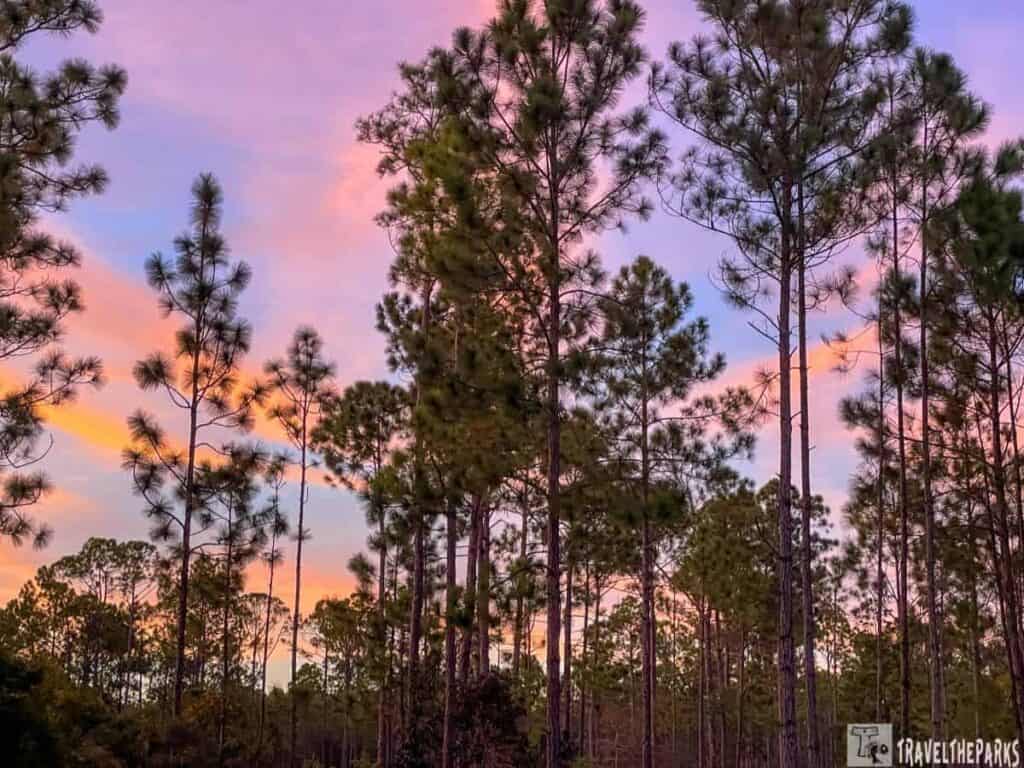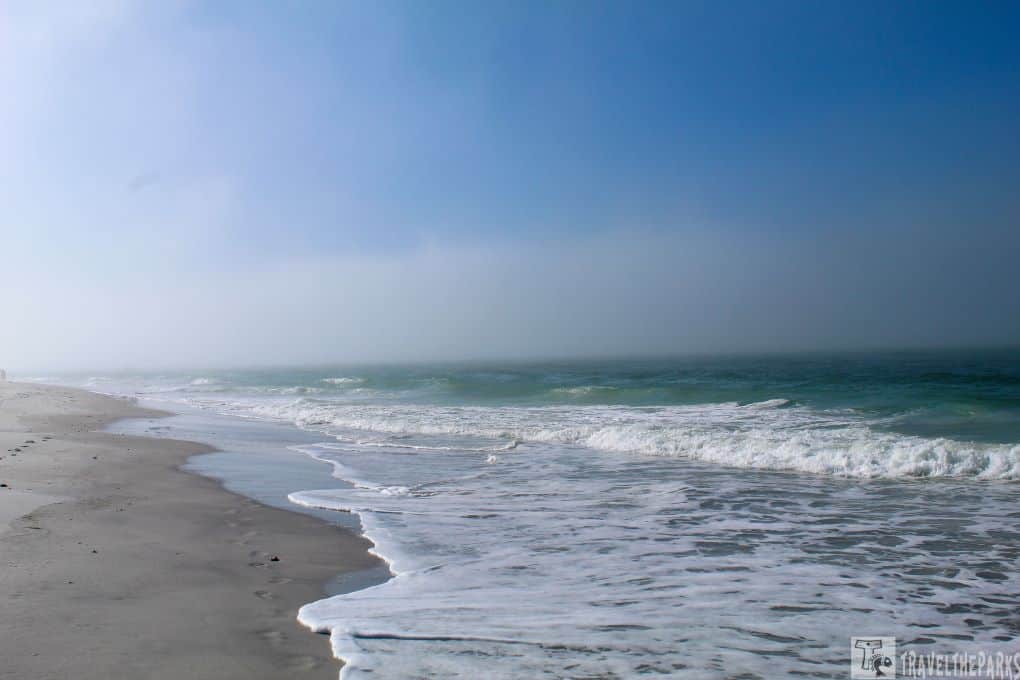If you’re planning Central Florida travel, the Kennedy Space Center (KSC) should be at the top of your must-see list. I hadn’t been to the Kennedy Space Center in years. I last went when I attended a teacher’s workshop as a new teacher back in 2008. It’s on Florida’s Space Coast, just an hour’s drive from Orlando. I had forgotten that the Space Center offers incredible, interactive experiences that place you squarely in the middle of space exploration. From the incredible rockets to interactive exhibits, there is something for everybody. Our ultimate guide will walk you through everything you can do at Kennedy Space Center in a day. We’ve added our best tips for getting the most out of your experience while keeping it entertaining for all ages.
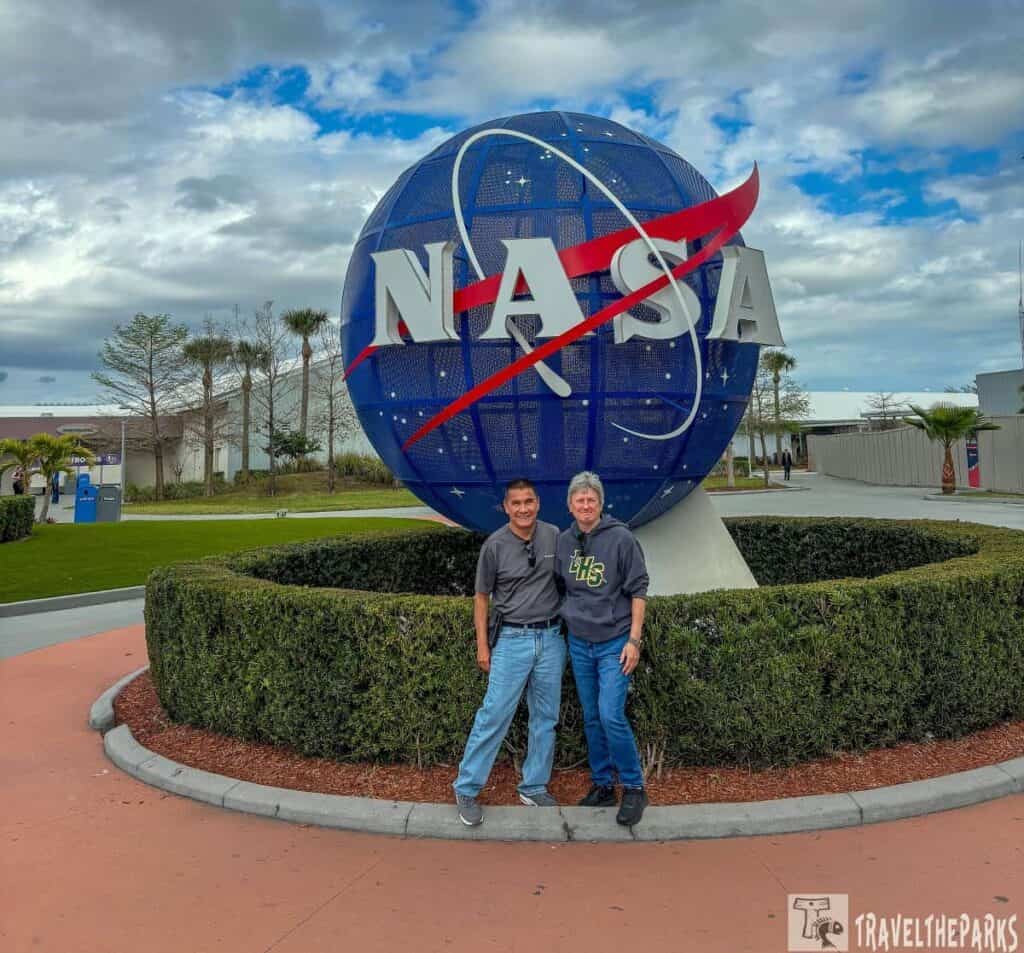
This post may contain affiliate links, meaning if you purchase something through one of these links, we may earn a small commission at no extra cost to you! Read the full disclosure policy here.

Table of Contents
Know Before You Go: Important Tips for Visiting Kennedy Space Center
- Operating Hours: The Kennedy Space Center Visitor Complex is open from 9 am to 5 pm, Monday to Sunday. The complex’s admission closes one hour before closing time. The last bus tours run 2.5 hours before closing time for the complex.
- Tickets and Pricing: General Admission: $75 for adults, $65 for children (ages 3-11). This includes access to the main visitor complex. Age 55+ and US military personnel can get discount tickets. Educator Study passes are free! AAA offers member discounts too.
- What’s included with a 1-Day Admission ticket? The Gateway™: The Deep Space Launch Complex featuring Spaceport KSC, Space Shuttle Atlantis® and the Shuttle Launch Experience®, Kennedy Space Center Bus Tour, Apollo/Saturn V Center, Heroes and Legends featuring the U.S. Astronaut Hall of Fame®, Astronaut Encounter, Planet Play, Rocket Garden tours, Journey to Mars, IMAX theater, and other scheduled presentations, appearances and films.
- Upgrade Your Tour! Chat with an Astronaut (includes snacks & beverages), Explorer Guided Bus Tours (extended bus tours), Astronaut Training Experience (ATX)®, Astronaut Training Experience Training Stages.
- Parking: $15 per vehicle, RV oversized vehicles $20.
- Best Time to Visit: To avoid sizeable crowds, plan your visit on a weekday, ideally in the morning. The busiest times tend to be during the summer months and around major holidays. October-November is good.

How do I get to Kennedy Space Center from Central Florida?
Getting to the Kennedy Space Center is fairly straightforward, and there are several ways to get there depending on your starting point and preferences. The center is near Merritt Island, Florida, which is about halfway between Orlando and Cocoa Beach. It is convenient to the Canaveral National Seashore and is actually a part of the Merritt Island National Wildlife Refuge. Here’s how to get there:
- By Car from Orlando: Take FL-528 East (Beachline Expressway) directly to Kennedy Space Center. The drive takes about 45 minutes (approximately 40 miles).
- By Car from Walt Disney World Resort: Take FL-528 East for a quick and direct route, about a 50-minute drive (45 miles).
- By Tour Bus: Various local tour operators provide shuttle services from popular spots in Central Florida (like Disney or Orlando) directly to the Kennedy Space Center. Check with your hotel or tour company for specific options.

What Can You Do in One Day at Kennedy Space Center – Central Florida Travelers?
There’s so much to see and do at the Kennedy Space Center that you’ll definitely need a full day to take it all in. To make the most of your visit, download the KSC App ahead of time for easy navigation and event updates. Arrive early—parking opens at 8:30 AM, and by 9 AM, we were already facing a long line. To skip the wait, we recommend purchasing tickets online beforehand, so you can get into the park and start exploring right away!

When planning your trip to the Kennedy Space Center Visitor Complex, remember that the complex is divided into five main sections called Mission Zones. Every zone tells a distinct part of the story of space exploration guiding you through history in the order that events occurred. Here’s the five mission areas: Heroes & Legends, Behind The Gates, Race To The Moon, Shuttle: A Ship Like No Other and NASA Now + Next.
Note: The Shuttle Bus to the Apollo/Saturn V Center only offers narration and highlights along the way. For a closer look at restricted areas like Launch Complex 39 and the Vehicle Assembly Building, you’ll need to purchase the Explorer Guided Bus Tour. This tour uses an expert space tour guide.

Starting our Adventure at the Kennedy Space Center
After getting our tickets and passing through security, the first thing we did was go to the bus tour depot, which opens at 9:30 AM. As you walk through the entrance, it’s easy to get sidetracked by all the exciting things around you. However, we wanted to focus on the first programs of Space Flight: Apollo/Saturn V Center: Race for the Moon. The shuttle bus is the only way to reach the Apollo/Saturn V Center from the main complex. We intended to visit the mission areas in chronological order, but our research showed that taking the shuttle buses can be challenging later in the day because most visitors start their journey at the entrance of the park.

Note: Shuttle bus lines can get long during the late morning to early afternoon hours. We recommend visiting the shuttle bus service first thing in the morning to avoid the wait, as buses stop running two hours prior to the center’s closing time.

1. Behind the Gates: Bus Ride to the Apollo/Saturn V Center
On our exclusive behind-the-gates bus tour, we gained insight into NASA’s operations. This mission zone offers a glimpse into the inner workings of the Kennedy Space Center, featuring the space shuttles and rockets that have launched into the cosmos. It’s quick 15-minute bus ride took us to the Apollo/Saturn V Center. Along the way, our guide narrated fascinating facts about the Kennedy Space Center’s 144,000-acre site, which is part of the Merritt Island National Wildlife Refuge. In front of the KSC badging center, we could see a Redstone rocket with a mock-up of a Mercury capsule on top.

The highlight was passing the towering Vehicle Assembly Building (VAB), a truly impressive structure. It’s a remarkable achievement in engineering-one of the biggest structures in the world at 525-feet. Finished in 1966, this enormous building covers 8 acres. They assemble famous vehicles like the Space Shuttle there. Our driver pointed out the two crawler transporters.
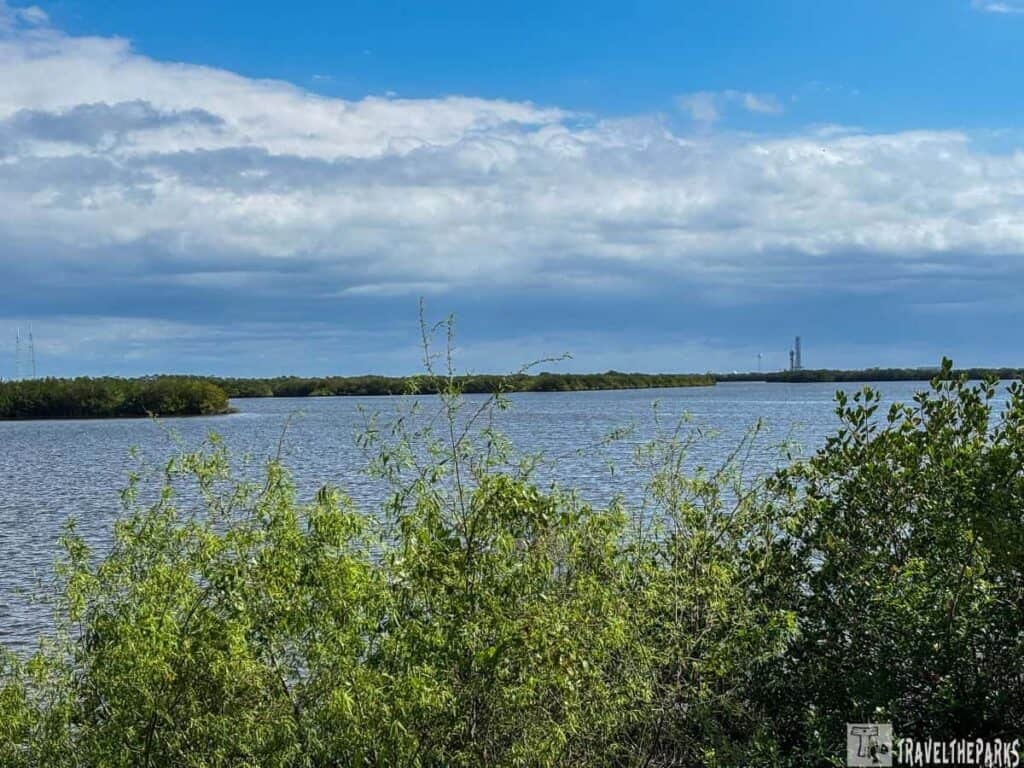
Upon arriving at the center, she directed attention across the bay to launch complex 39A and launch complex 39B, which visitors can see from the Banana Creek viewing area.

2. Race to the Moon: Experience the Apollo/Saturn V Center
- Attractions: Race to the Moon Mission Zone
- Apollo/Saturn V Center (accessed via bus tour):
- Saturn V Rocket: Full-scale display of the moon rocket.
- Lunar Module 9: Historic spacecraft and moon landing exhibits.
- Firing Room Theater: Relive the Apollo 8 launch.
The tour of the Apollo/Saturn V Center takes approximately 40 minutes. However, we found it so interesting reading everything; we allowed ourselves 2.5 hours. You can explore it at your own pace and return to the Visitor’s Center whenever you wish. The Race to the moon mission zone let us dive into the thrilling era of the Space Race and discover the incredible journey of NASA’s Apollo program. It highlights the fierce rivalry between the United States and the Soviet Union as they both strived to achieve a Moon landing, culminating in the historic Apollo 11 mission.

Apollo 8: Pioneering the Path to the Moon
Immediately upon arrival, we stepped into the restored Firing Room. Here you feel the suspense of Apollo 8’s launch in 1968, the first crewed mission to orbit the Moon and return safely to Earth. One of the best parts of the show is following the crew’s real-time journey via footage and mission control audio. Witnessing the Saturn V rocket’s thunderous liftoff, we could hear the launch countdowns, see flashing lights, vibrating seats and feel the electrifying atmosphere inside the Firing Room’s high-tech interactivity made history come alive for me.

Exploring the Apollo/Saturn V Center: A Journey Through NASA’s Historic Lunar Missions
Upon entering the Apollo/Saturn V Center, the Saturn V rocket, in all its glory, immediately draws your eyes. This powerful rocket is the largest ever built, and it’s on full display here. At 363 feet long, we could walk beneath the stages of the rocket. It’s hard not to marvel at the sheer scale of the engineering. As we walked around the expansive building, we found a range of multimedia exhibits, including videos, photos, and artifacts related to the early space programs.
Don’t miss these highlights for an unforgettable journey through early space exploration:
- Real Moon Rocks!: Get your picture taken touching one of the genuine Moon rocks returned on the Apollo missions.
- Lunar Footprint Experience: I really liked that we could step into a recreation of the Moon’s surface and make our own footprints. It was just cool.
- A remarkable exhibit featuring the historic Apollo 8 Command Module reveals the authentic spacecraft that orbited the Moon.
- Moon Landing Exhibit: This display lets you explore the story of Apollo 11’s successful Moon landing in 1969, where Neil Armstrong and Buzz Aldrin made history as the first humans to walk on the lunar surface.
- Lunar Exploration: Learn about the technology and innovations that enabled astronauts to explore the lunar surface.
- Discover a quirky slice of space history at the Fisher Space Pen exhibit. This iconic pen is a fascinating piece of space history. Learned something new uncovering the remarkable engineering behind the famous space pen that writes in zero gravity. This isn’t your average ballpoint—it’s a gravity-defying engineering marvel!
- Experience Apollo 11’s ultimate moment on the Moon by watching “The Eagle Has Landed” at the Lunar Theater.
- Ad Astra Per Aspera: This Latin phrase translates to “To the stars through difficulties” or “Through hardships to the stars.” This Apollo 1 Tribute honors the lives, achievements, and enduring memories of Gus Grissom, Ed White, and Roger Chaffee, the three astronauts who tragically lost their lives during training for the Apollo 1 mission.



Moon Tree Garden: A Celestial Stop at Kennedy Space Center
Prior to boarding the bus again to the main visitor complex, we walked through the Moon Tree Garden. This special place contains 12 sycamore trees planted in a circle that were cultivated from seeds which traveled to the Moon aboard Apollo 14 in 1971, representing Earth’s connection with space travel. The trees create a peaceful place for reflection on humanity’s amazing lunar achievements; each honors one of the 12 Apollo missions and its astronauts.


The garden’s highlight is the sensational bronze statue “The Eagle Has Landed,” commemorating the historical Apollo 11 Moon landing. Don’t overlook this peaceful space-age memorial to the stars!

3. Heroes & Legends: A Tribute to Space Pioneers at KSC
- Attractions: Heros and Legends Mission Zone
- U.S. Astronaut Hall of Fame: Celebrates astronauts’ achievements.
- The Right Stuff Theater: Immersive film experience about astronaut selection.
- Rocket Garden: The garden features iconic rockets such as the Redstone, Titan, and Delta. Mercury and Gemini Missions artifacts like capsules and spacesuits.
- Universal Theater: Included with admission check the schedule for daily events such as the Astronaut Encounter or All Systems Go performances.
- Chat With An Astronaut ($ Add-on) have a meal with an astronaut.
The Heroes and Legends Exhibit at the Kennedy Space Center especially moved me. It’s a heartfelt tribute to the various efforts of astronauts. The US Astronaut Hall of Fame honors the great sacrifices made by astronauts. It features interactive displays that share their life stories and showcase important items from their journeys. “Helping to define what it means to be a hero.” It serves as a great reminder of the determination, creativity and courage required to put boundaries on human exploration. Anyone who appreciates those who took the risk of travelling to space should visit this place.

Explore the Rocket Garden: Kennedy’s Giants
We scheduled this for the end of the day; however, it was crowded. Spending some time walking through the Rocket Garden where we could see real rockets from NASA’s early days of exploring space. It’s a great place for taking pictures but it also helps you understand how big and impressive these huge rockets really are. If you want to avoid the crowds to take selfies and discover information about the Mercury and Gemini space missions, do this first thing in the morning.
PRO Tip: Visit the Rocket Garden by 9 AM to avoid the crowds!

Space Mirror Memorial – Honoring the Fallen Heroes of Space Exploration
The Space Mirror Memorial serves as an impactful homage to the astronauts who sacrificed their lives for the advancement of space exploration. Also referred to as the Astronaut Memorial, this national monument pays tribute to those who made the ultimate sacrifice in the name of humanity’s quest beyond our planet.

The memorial itself is an imposing, polished black granite surface that mirrors the sky above. It represents the limitless expanse of space. Inscribed on this surface are the names of brave astronauts who perished, including the crews of Apollo 1, Challenger (STS-51L), Columbia (STS-107), and others who lost their lives during training or missions. As sunlight filters through the intricately laser-cut names, it backlights them, producing a radiant, otherworldly glow that is both haunting yet beautiful.
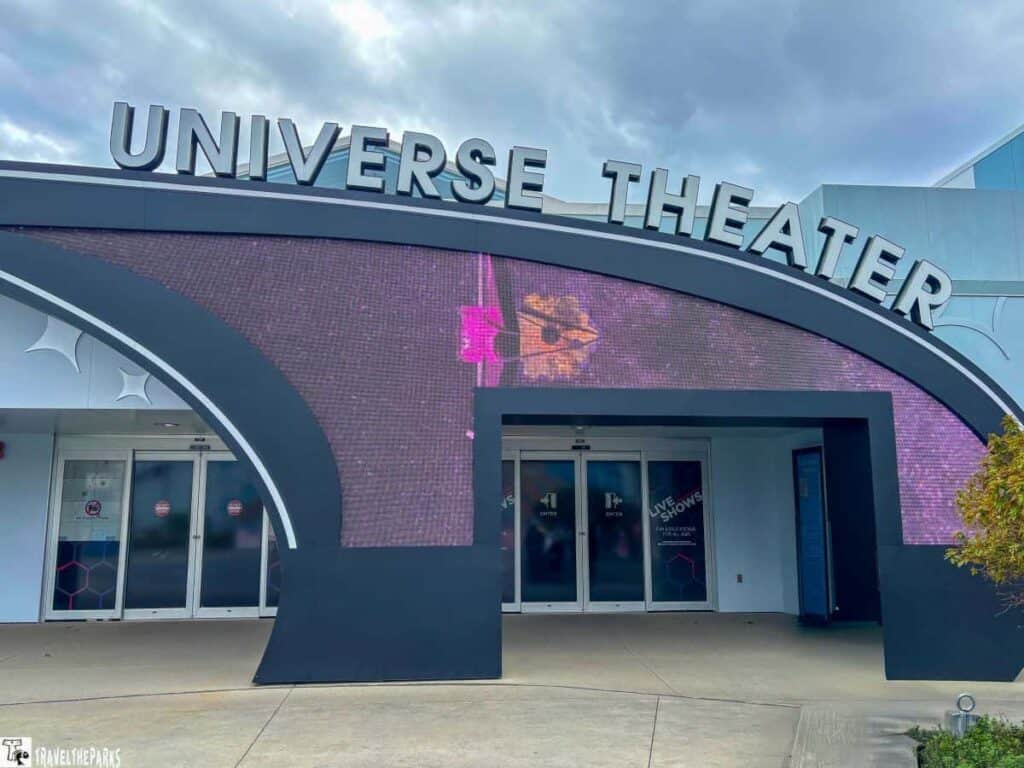
Astronaut Encounter: Meet the Real-Life Heroes of Kennedy Space Center
Make sure to look daily schedule for the Universe Theater programs throughout the day. One of our favorite activities was the Astronaut Encounter, where you get to meet actual astronauts. On the day we went, Robert “Bob” Thirsk, a Canadian Payload specialist, was the guest speaker. He took part in the STS-78 Space Shuttle mission, the Soyuz TMA-15 mission and the International Space Station (ISS) Expedition 20/21. He talked about his experiences in space and answered our questions about what it is truly like to go there. It’s a great chance to talk with someone who has experienced things that very few people have.
I thought the “All Systems Are Go” was a delightful stage production at Universal Theater that combines the whimsical wonder of Charles Schulz’s famous Peanuts icons with actual space science. This groundbreaking show employs cutting-edge puppetry, animation, and special effects. What they term “Puppatronics” to bring Snoopy, Woodstock, Charlie Brown, and friends to life in ways I could never have imagined. It’s a 20-minute spectacle written specifically for children.
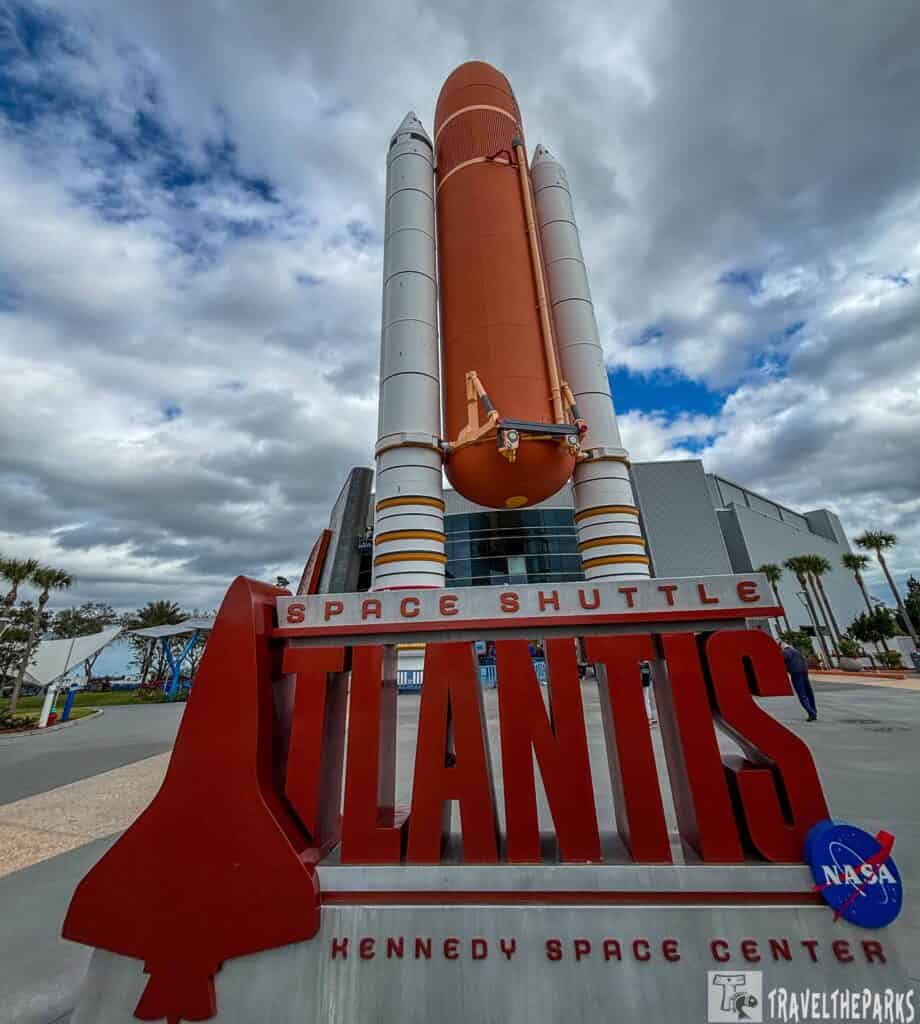
4. Space Shuttle Atlantis: A Ship Like No Other – Discover the Legacy of Space Travel
- Attractions: Space Shuttle Atlantis Mission Zone: Marvel at the shuttle’s intricate details and learn about the setbacks and triumphs of its mission.
- Shuttle Launch Experience: Get ready for an intense, realistic simulation that places you squarely in the midst of a space shuttle launch.
- Astronaut Training Simulators: Interactive simulators where you can test your skills by docking the shuttle, maneuvering the robotic arm, and landing the orbiter. Kids can go through the kind of training real astronauts do.
- Hubble Space Telescope Theater: Come near to the wonders of deep space in this theater experience with stunning visuals and stories on how Hubble has rewritten the textbook on the universe.
- ISS Triumph of Technology: Tour the International Space Station (ISS) and learn how it is used as a platform for advancing science and technology.
- Constellation Sphere: learn about various constellations and the objects they contain, giving a unique close-up perspective of the night sky.

Atlantis: A Must-See Experience at the Kennedy Space Center for Central Florida Travelers
The space shuttle exploration begins with a short film of the Space Shuttle program’s tragedies and triumphs. At the end, the screen darkens. Suddenly, the curtain rises; it’s a goosebump-inducing reveal of the Atlantis. My heart stopped beating for a moment; it was that moving for me. I was awestruck by the shuttle’s size (122 feet long!) and the bare fact of its 33 spaceflights. It’s a truly humbling experience.
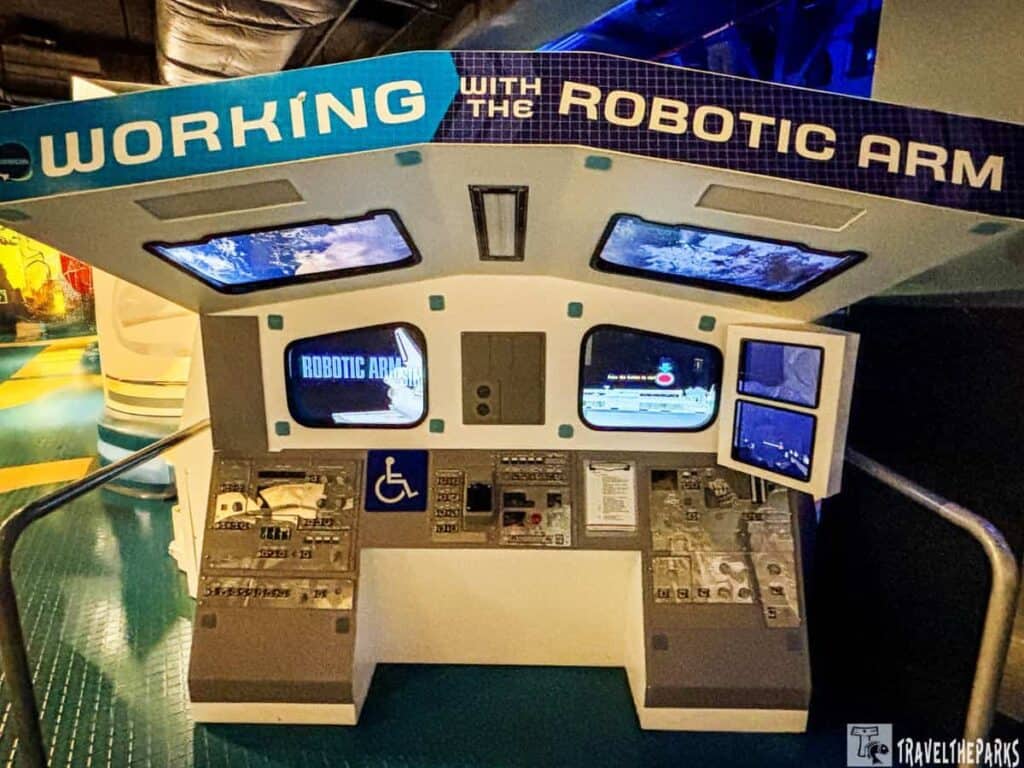
The Shuttle Launch Experience simulator: Buckle Up!
As soon as we entered the Shuttle Launch Experience®, we realized we were about to have an amazing experience. The air was buzzing with excitement. The bright neon lights and the sound of mission control getting ready for takeoff. We had a quick pre-launch briefing before buckling our seatbelts. The countdown commenced as the simulator began. It was then the cabin leaned back and our seats began to shake. In that moment we stopped being visitors and became astronauts preparing for launch.
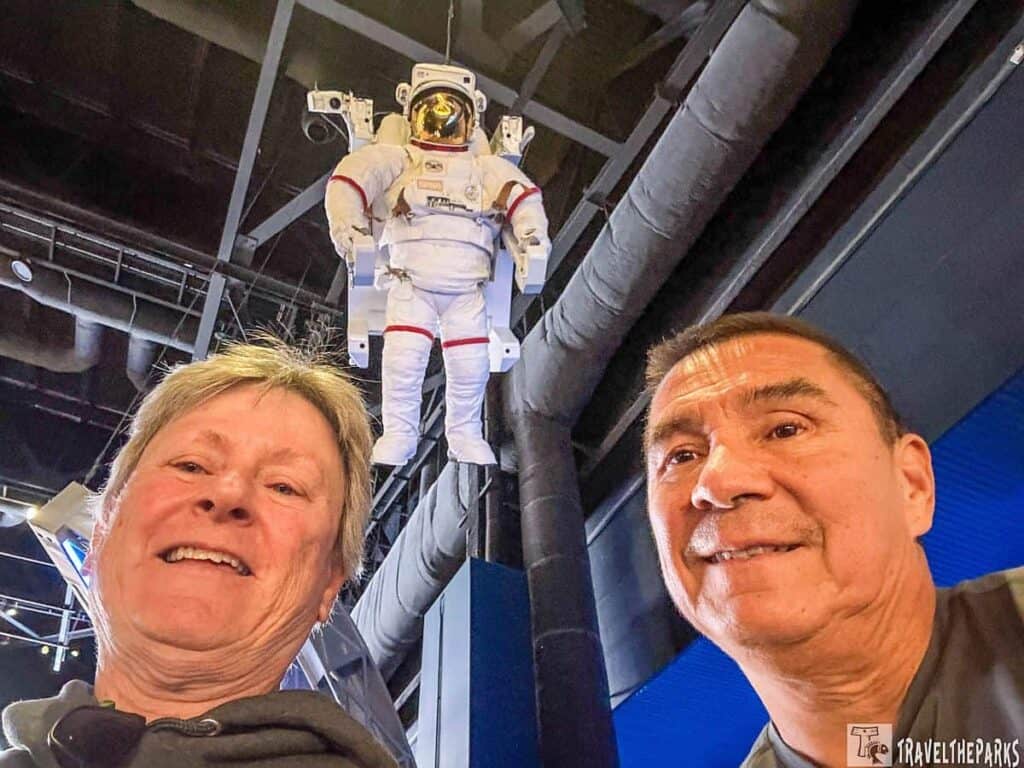
The vibrations, flashing lights, and thunderous sound effects made it feel unbelievably real. The chairs shook under us, and the walls trembled like they were about to launch rockets. For a few exciting seconds, we could really imagine what it would feel like to take off into space. It was exciting and truly memorable. I stepped outside with a grin, talking about how cool it was and how real it felt.

A Must-See Memorial on Your Kennedy Space Center Tour: Honoring the Challenger and Columbia Heroes
The Forever Remembered exhibit really touched me as it honored the 14 astronauts who died in the Challenger disaster in 1986 and the Columbia disaster in 2003. This display features astronauts’ belongings like their uniforms, notebooks and other keepsakes that showcase their lives outside of their missions. One of the strongest features of the exhibit is the sections from both the Challenger and Columbia shuttles. The exhibit shows these items to remind us of the dangers and sacrifices involved in exploring space. It elicits powerful emotions.

There is an unimaginable number of interactive activities for kids in the Space Shuttle Atlantis area. One of the most popular has to be the slide. Riding the slide at the Space Shuttle Atlantis exhibit. The “Fiery Ride Home” is an experience that goes far beyond a typical playground thrill—it’s designed to simulate the steep angle astronauts experience during re-entry. At the top, a panoramic view of the exhibit sprawls out below you, giving a moment of awe before the plunge. Once you push off, the slide swoops downward at a steep incline, creating a rush of adrenaline that mimics the intensity of descending back to Earth. At least it was fun for me.

This massive, polished granite globe is etched with 88 constellations and over 1,100 stars, accurately representing how the night sky appears from Earth. It was pretty cool. What makes it truly special is that the sphere is mounted on a thin film of water, allowing it to gently rotate with a simple touch, giving the illusion of a floating star map.

4. Discover the Future: Key Attractions in the NASA Now + Next Zone Mission Zone
NASA Now + Next gives you a peek into the next frontier of space exploration, making it a must-see for anyone eager to understand the future of space travel and NASA’s long-term vision. The standout attractions here are the Journey to Mars pavilion, and the Gateway: The Deep Space Launch Complex.

Blast Off at Kennedy Space Center: Journey to Mars–NASA’s Current and Next Generation Missions
- Attractions: Journey to Mars: Explorers Wanted
- Mars Rover Vehicle Navigator: (MRVN) is one of the flashiest and most futuristic parts of the Journey to Mars exhibit
- IMAX Theater (included): Catch a 3D space film like Journey to Space—perfect for cooling off in the Central Florida heat.
Visiting the Journey to Mars exhibit at Kennedy Space Center was thrilling. It provided an exciting chance to see space technology while learning about the future of exploring Mars. Upon entering the pavilion, we found ourselves surrounded by glowing red lighting and sleek, modern design elements that evoked the Martian landscape. A stop at the Journey to Mars theater adds a cinematic touch, pulling you into a stunning 3D experience that outlines NASA’s roadmap to the red planet and beyond.
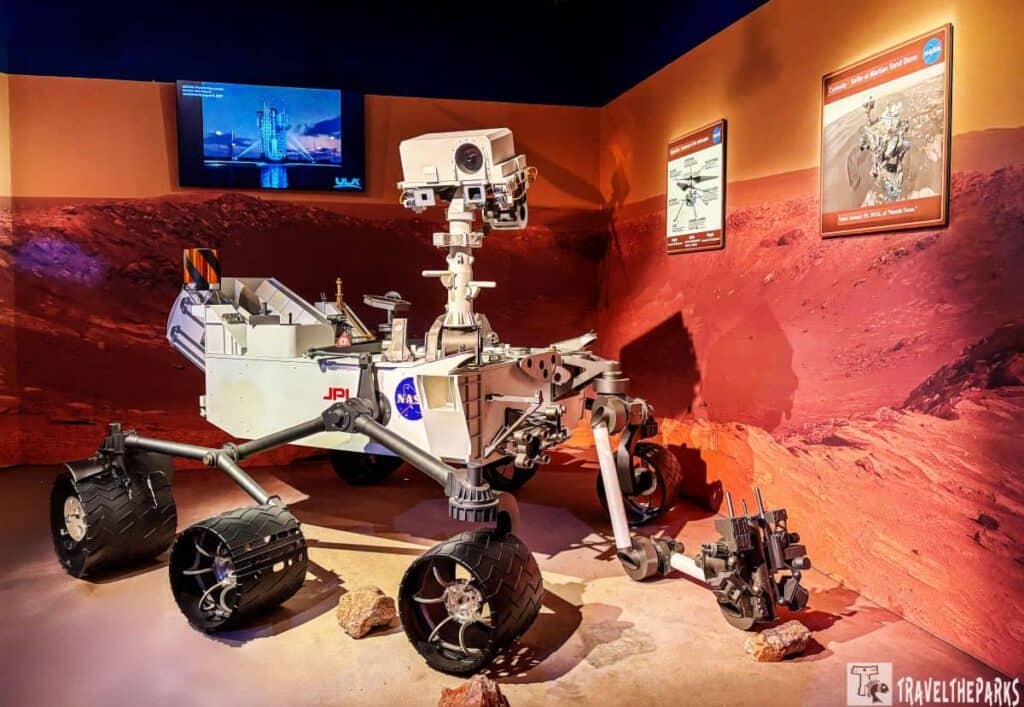
Exploring the Future of Mars Exploration: Rovers, Technology, and the Space Exploration Vehicle (SEV)
The exhibits provided insights into the construction of rovers designed to navigate the Martian surface. Some had interactive displays that showed their tools and what they can do. A few examples show our future plans for Mars colonization. It features the technology and homes that might help people live on the Red Planet. Each display provides an engaging view of the new concepts and challenges involved in traveling to Mars and living there successfully. This exhibit makes the dream of going to Mars feel possible. It’s not only informative but also really motivating.

The Space Exploration Vehicle (SEV) featured in the Journey to Mars exhibit is an impressive sight. It is a modern advanced rover created to help astronauts explore distant places like Mars or the Moon. It appears like something from a science fiction film featuring a flexible design with a sealed cabin and large rotating wheels made to navigate rough and otherworldly landscapes. The SEV is not just a rover; it’s also a moving home. Astronauts can stay and work inside it for as long as two weeks without having to go back to a base.
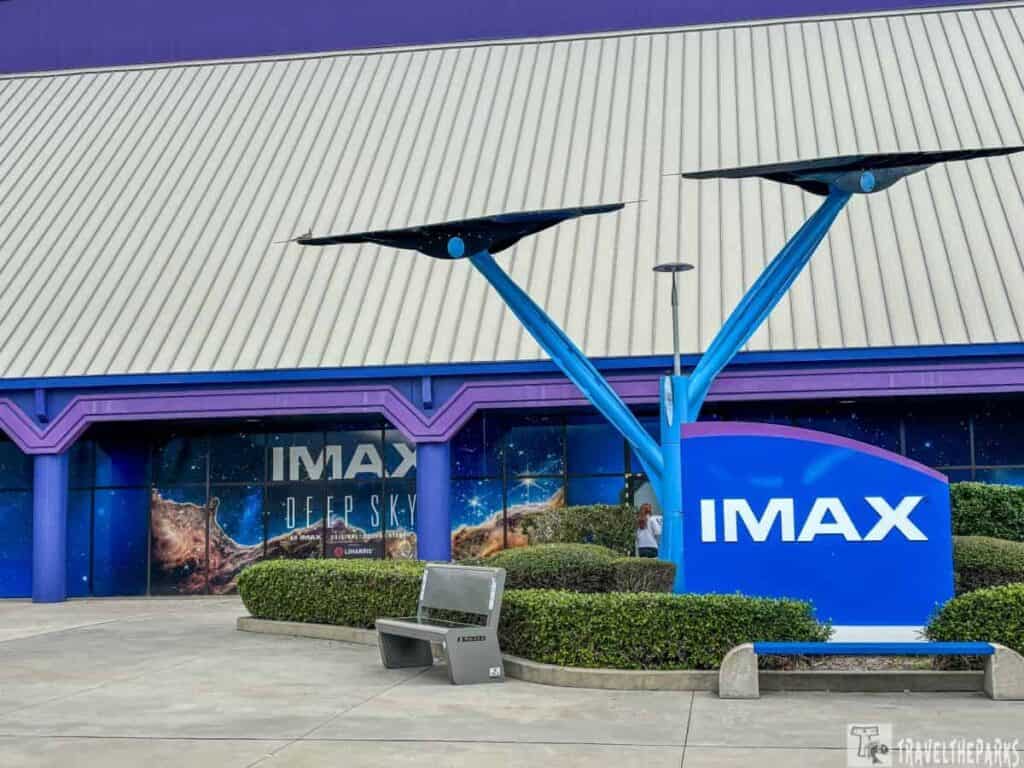
Don’t miss Kennedy Space Center’s IMAX Theater. The simulation level of the IMAX theater was unsurpassed, I must say. This enormous screen, the amazing visuals, and the amazing sound together create an exciting ride and we felt like we were right there in the thick of things. The film’s start, following the dimming of the lights, immediately transports you into breathtaking space missions. It lets you soar alongside astronauts and spacecraft as they journey across the cosmos. It is an experience you won’t soon forget.

Gateway: The Deep Space Launch Complex – NASA’s Launchpad for Future Missions to the Moon, Mars, and Beyond
- Attractions: Gateway: The Deep Space Launch Complex
- Spaceport KSC Motion Theater Ride (45-minutes)
- Astronaut Training Experience (Add-on)
This is one of the most exciting new additions to Kennedy Space Center providing an immersive look at humankind’s next great leap into deep space. We got to walk around and see real space artifacts, including spacecraft from SpaceX, Boeing, Lockheed Martin, and Blue Origin—many of which have already been flown in space. Augmented reality features and interactive screens allowed us to get hands on with this powerful technology and familiarize ourselves with the systems that will take astronauts deeper into space than anyone has ever gone. It’s fascinating fun interactive for the kids!
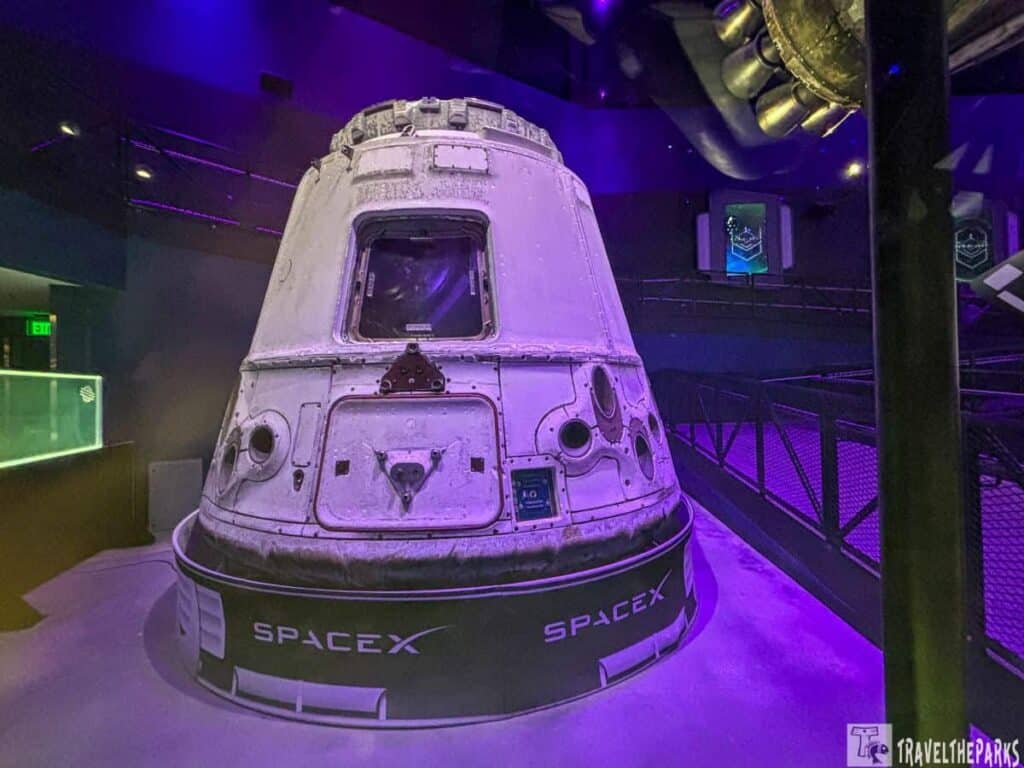
The Spaceport KSC Launch Experience is the crown jewel of the Gateway experience. It’s a next-level motion simulator that offers four different journey options—like flying past Saturn, visiting a space station orbiting Mars, or even exploring exoplanets. I have to say it’s an intense, immersive ride that feels as close as you can get to actual space travel without leaving Earth.

Make time to have Playtime: Planet Play
Planet Play is ideal for balancing energy-burning fun with subtle education. The multilevel building is chock full of fun interactive for the kids. As a teacher, the activities that combine STEM learning with fun play really impressed me. They designed the indoor playground for children aged 2 to 12. It has special areas for different ages, like soft play areas for toddlers and tougher obstacle courses for older kids. This setup keeps everyone safe and entertained.
Enhance Your Visit Kennedy Space Center Adventure with an Add-On Experience
Take your Kennedy Space Center adventure to the next level by choosing one of the Add-On Experiences designed to give you exclusive access, deeper insight, and unforgettable moments beyond the standard admission. These premium options allow you to connect more personally with the world of space exploration and get closer than ever to NASA’s incredible work.

Take the KSC Up-Close Tour: Explore Tour Get an Inside Look
To really dive into the Kennedy Space Center’s operations, consider booking the KSC Up-Close Tour. This guided tour will take you to behind-the-scenes locations, such as the Vehicle Assembly Building and the launch pads. You’ll learn about the incredible technology and history that goes into preparing for space missions. It’s a great way to see areas that are usually off-limits to the public.
- Approximate Time: 2 hours
- Cost: $29.99 per person (available only at certain times of the year)
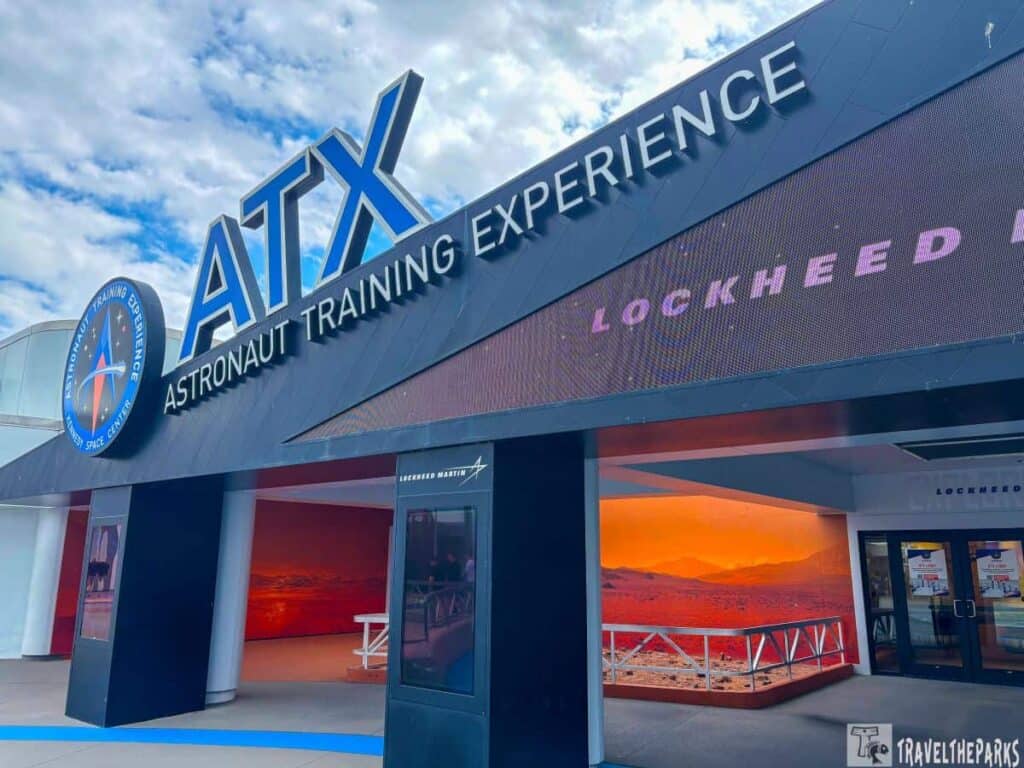
Kennedy Space Center: Astronaut Training Experience (ATX)
The Astronaut Training Experience (ATX) at Kennedy Space Center is one of the most immersive and hands-on adventures a space enthusiast can have without leaving Earth. It is designed to give participants a realistic taste of what it takes to live and work in space. This program combines cutting-edge simulation technology with authentic NASA-inspired training techniques.
- Approximate Time: 30-minutes
- Cost: $30 per person Choose from microgravity simulator, land & drive on mars, or walk on mars training.

Step Into the Future at Mars Base 1
If you’ve ever dreamed of dwelling on another planet, Mars Base 1 is your opportunity to make it feel real. This full-day immersion experience puts you in the center of a simulated Martian base, where you’ll oversee life-supporting tasks such as cultivating plants in the botany lab, coding robots to service solar panels, and conducting data analysis for NASA. Designed for guests 10 years and up, Mars Base 1 combines science and technology with collaboration in a full-immersion experience that’s both educational and thrilling. It’s a definite must-add for anyone looking to do more than just view space—start living it.
- Approximate Time: 5-7-hours
- Cost: $150 per person plus tax

Shop for Souvenirs at the Space Shop
Before you leave, don’t forget to stop by the Space Shop to pick up some unique space-themed souvenirs. From t-shirts and hats to toys and books, there’s something for every space fan. Plus, proceeds from the shop support NASA’s educational programs, so you’re helping fund the next generation of space exploration.

Final Thoughts on Our Central Florida Travel Day to Kennedy Space Center on the Space Coast
While Central Florida is renowned for its theme parks, for an out-of-this-world experience, be sure to include the Kennedy Space Center (KSC) on your travel itinerary. Our visit to the Kennedy Space Center was nothing short of inspirational—a wonderful combination of history, technology, and out-of-this-world excitement. This iconic attraction on Florida’s scenic Space Coast gave us a deeper appreciation of the past, present, and future of space exploration. From walking beneath the mighty Saturn V rocket and touching a moon rock, to feeling the rush of a shuttle launch and imagining life on Mars, each encounter sparked a sense of awe and curiosity.
Are you passionate about space exploration and astronomy? What excites you the most about it? Drop a comment below and share this post!



